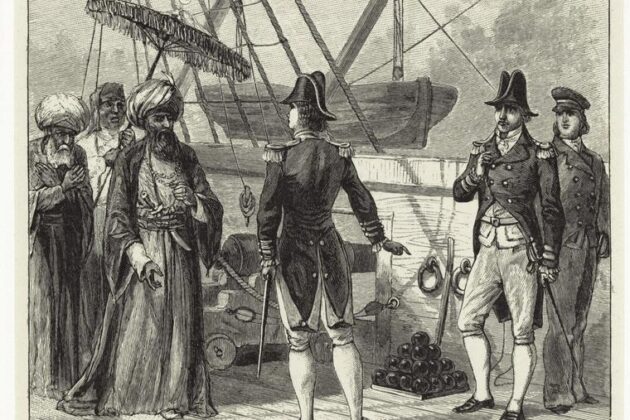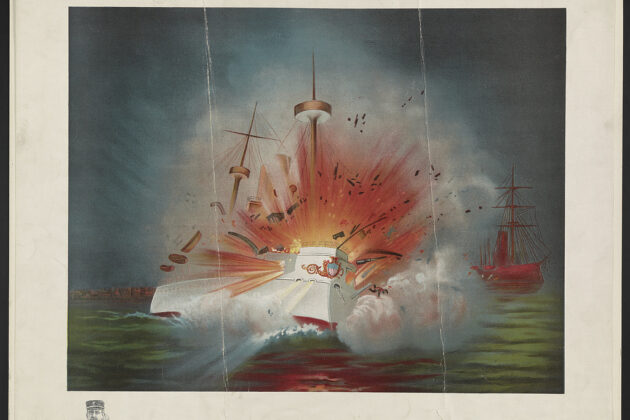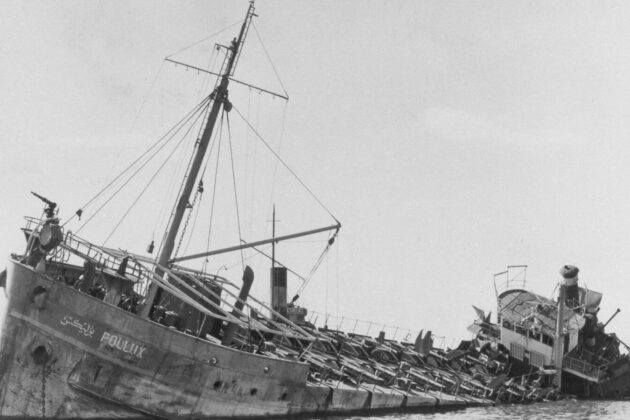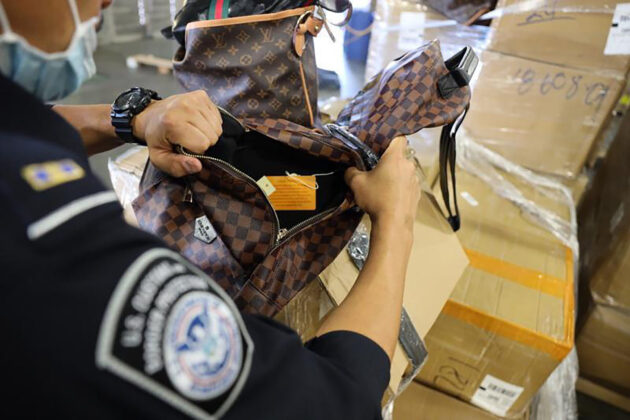Immerse students in the world of American Diplomacy
NMAD’s diplomacy simulations immerse middle school, high school, and college students in skill-building role-play simulations based on real-world scenarios developed by diplomats and historians. During a diplomacy simulation, students practice collaborating with people who have diverse values, interests, and perspectives to reach a mutually beneficial outcome.
More Diplomacy Simulations
What Students & Teachers are Saying
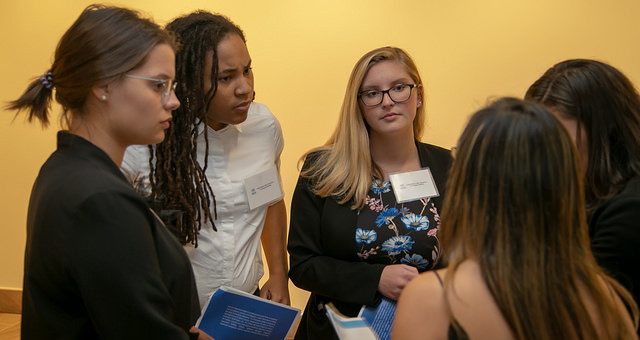
“It was a wonderful experience. Doing the simulation really gave me a view of what global trade and negotiating trade between countries is like. It was a lot of fun setting goals and negotiating with others to meet those goals.”
– Elliot, Washington Center Student, October 2018
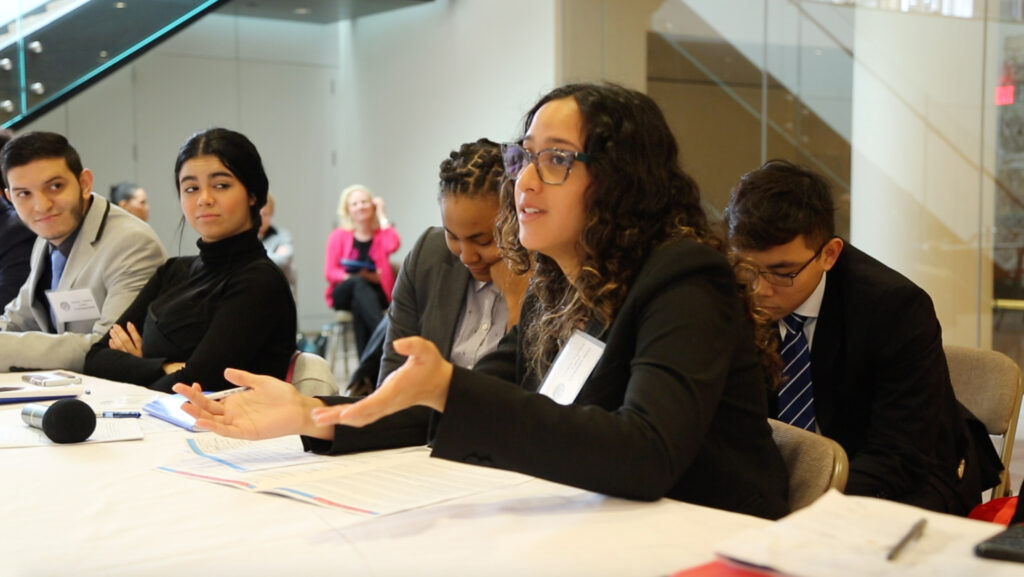
“You negotiate everyday with your siblings, with your roommate, with your parents, to get something you want. So I think this is just applying it to more of an international and diplomatic spectrum and I think I will keep this for the rest of my life.”
– Sabrina, Washington Center Student, October 2018

“You have to learn how to be patient and understanding with dealing with other people and realizing their ideas…today was really important for honing those skills.”
– Amina, Washington Center, October 2018
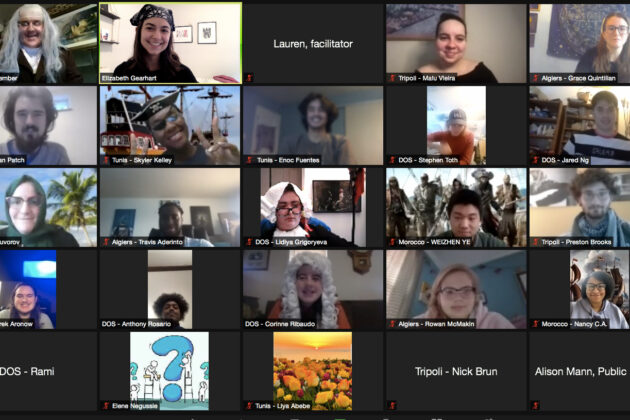
How to Produce a Virtual Diplomacy Simulation
The following instructions outline the steps to produce and lead a virtual diplomacy simulation. A 120-minute program works best, although organizers may expand or minimize the time to best suit individual classroom needs.
Facilitator Slideshow Presentations
These curated slideshow presentations are resources for educators and facilitators to teach about diplomacy, the State Department, and to provide an introduction to our diplomacy simulations.
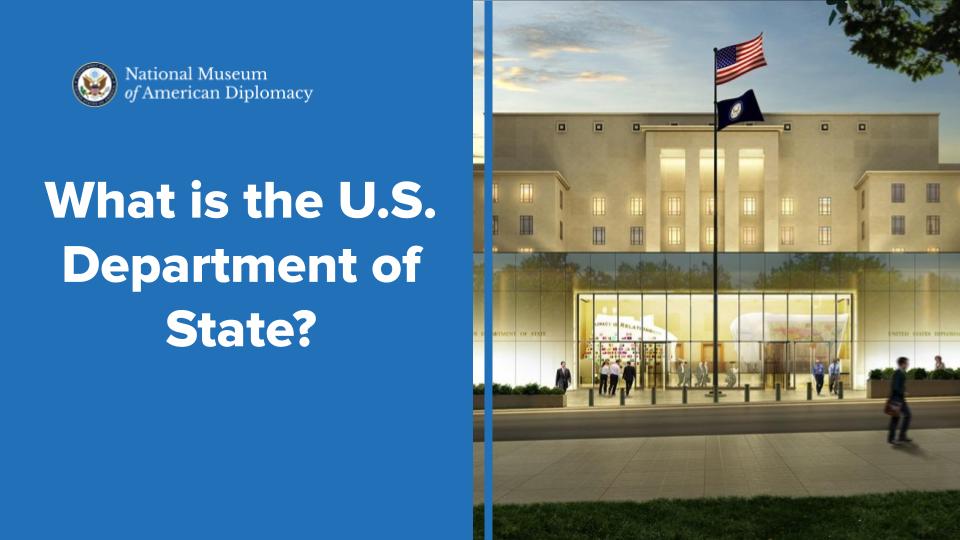
Who works at the State Department? What does the State Department do? This Google Slides presentation offers an overview of the institution.

What is diplomacy? Who conducts diplomacy? This Google Slides presentation offers an introduction to the concept of diplomacy.
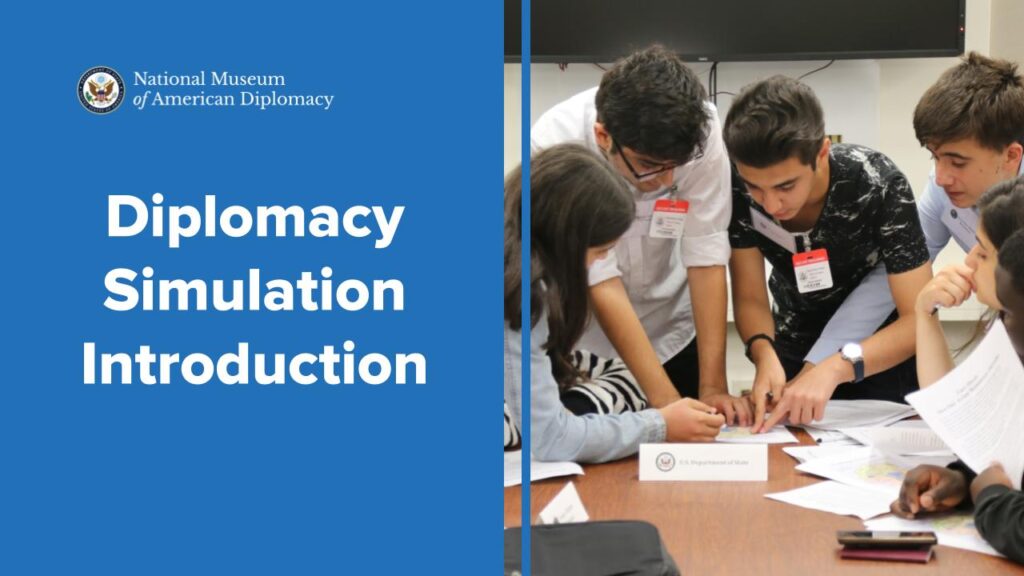
How do you conduct a diplomacy simulation? This Google Slides presentation offers an overview of the structure, roles, tasks, and best practices.
Playlist of Instructional Videos
Frequently Asked Questions
What’s a simulation?
A diplomacy simulation is a collaborative learning experience in which students step into the role of real-life diplomats. Within each simulation, there are five to six teams representing foreign governments, non-governmental organizations (NGOs), and international organizations, each with different perspectives and priorities. Under set time constraints, teams try to negotiate a peaceful solution to the crisis in the scenario. Students develop their group’s positions using information in the free downloadable simulation packet, and defend or modify their choices in real time.
How can I use it in the classroom?
Our diplomacy simulations serve as excellent complements to lessons on history, international relations, U.S. foreign policy, and current events. They help students develop skills in critical thinking, teamwork, collaboration, problem-solving, persuasive communication, and global competence.
How do diplomacy simulations prepare students to succeed in the 21st century?
In today’s globalized world, analytical and interpersonal skills are increasingly important. Diplomacy simulations help prepare students to tackle complex issues together by developing the following 21st-century skills:
- Critical thinking: Researching and defining a position on a foreign policy issue, adjusting this position as the negotiation evolves.
- Collaboration: Prioritizing goals and objectives, and defining responsibilities within the group.
- Problem-solving: Creatively negotiating, compromising, and resolving conflict.
- Persuasive Communication: Active listening, team building, alliance-building, weighing different perspectives and points of view, articulating a position, and persuading others.
- Global Competence: Investigating a worldwide issue, appreciating different perspectives on that issue, finding opportunities to improve the situation, and taking practical actions.
How much does it cost?
Diplomacy simulations are free! All of the required materials are available for free download.
What materials do I need?
Our free simulation materials include teacher and student packets, name tags, stakeholder fact sheets, and tent cards. They can all be downloaded on our website.
How many students can participate?
Diplomacy simulations are designed for classes of 15 to 30 students. However, simulations will work as long as students can be divided into 5 or 6 teams.
What ages can participate?
Middle school, high school, college, and graduate-level students can successfully participate, depending on the simulation.
How far in advance do I need to prepare my students?
Most of our simulations can be run without prior preparation by students. See the instructional videos above for more information
Can I edit a simulation to fit my students’ needs?
Yes! Our diplomacy simulations are editable and in the public domain.
Who wins the simulation? What if there is no agreement at the end?
There are no winners or losers in the simulation. While consensus is the goal, a successful simulation may end in disagreement, but more important than the end result is the process. By working in teams and negotiating with each other, students will practice critical thinking, teamwork, collaboration, problem-solving, persuasive communication, and global competence.
